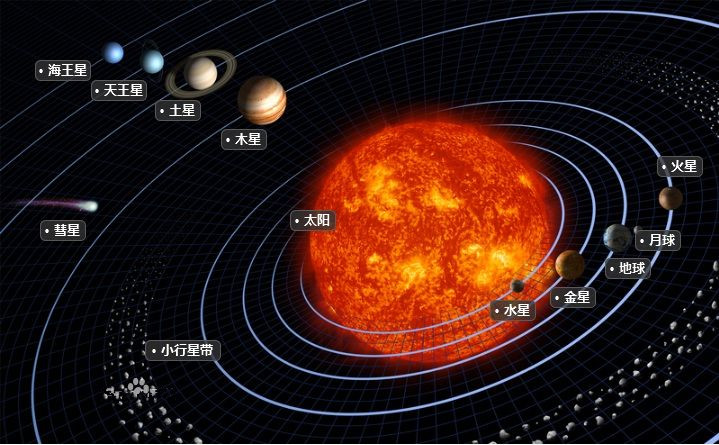What Shoemaker and his colleagues found was that there was more risk out there—a great deal more—than anyone had ever imagined.
蘇梅克和他的同事們發現的是,外層空間存在著比想像的還要多——多得多——的危險。
Asteroids, as most people know, are rocky objects orbiting in loose formation in a belt between Mars and Jupiter. In illustrations they are always shown as existing in a jumble, but in fact the solar system is quite a roomy place and the average asteroid actually will be about a million miles from its nearest neighbor. Nobody knows even approximately how many asteroids there are tumbling through space, but the number is thought to be probably not less than a billion. They are presumed to be planets that never quite made it, owing to the unsettling gravitational pull of Jupiter, which kept—and keeps—them from coalescing.
許多人都知道,小行星是巖質物體,散落在火星和木星之間,在一片狹長空間里運行。在插圖里,它們看上去總是擠作一團;實際上,太陽系是個很寬敞的地方,普通的小行星離它最近的鄰居大約有150萬公里之遠。誰也說不清大概有多少顆小行星在太空里打滾,但據認為這個數字很可能不少于10億顆。人們推測,小行星本來可以成為行星,但由于木星的引力很不穩定,使得它們無法——現在依然無法——結合在一起,因此它們的目的從未實現過。

When asteroids were first detected in the 1800s—the very first was discovered on the first day of the century by a Sicilian named Giuseppi Piazzi—they were thought to be planets, and the first two were named Ceres and Pallas. It took some inspired deductions by the astronomer William Herschel to work out that they were nowhere near planet sized but much smaller. He called them asteroids—Latin for "starlike"—which was slightly unfortunate as they are not like stars at all. Sometimes now they are more accurately called planetoids.
第一次發現小行星是在19世紀初。第一顆小行星是一位名叫朱塞比皮亞齊的西西里島人在該世紀的第一天發現的——它們被看成行星。頭兩顆小行星被命名為谷神星和智神星。經過天文學家威廉·赫歇耳憑著靈感的多次演繹,認定它們遠沒有行星大,而是要小得多。他把它們稱為小行星——拉丁語的意思是“像星”——這有點兒不幸,因為小行星壓根兒不是星。現在他們有時被比較準確地稱作類星體。
Finding asteroids became a popular activity in the 1800s, and by the end of the century about a thousand were known. The problem was that no one was systematically recording them.
19世紀初,尋找小行星成了一項很熱門的活動。到該世紀末,已知的小行星多達1000顆左右。問題是誰也沒有對它們進行系統的記錄。
來源:可可英語 http://www.ccdyzl.cn/Article/201707/516263.shtml











